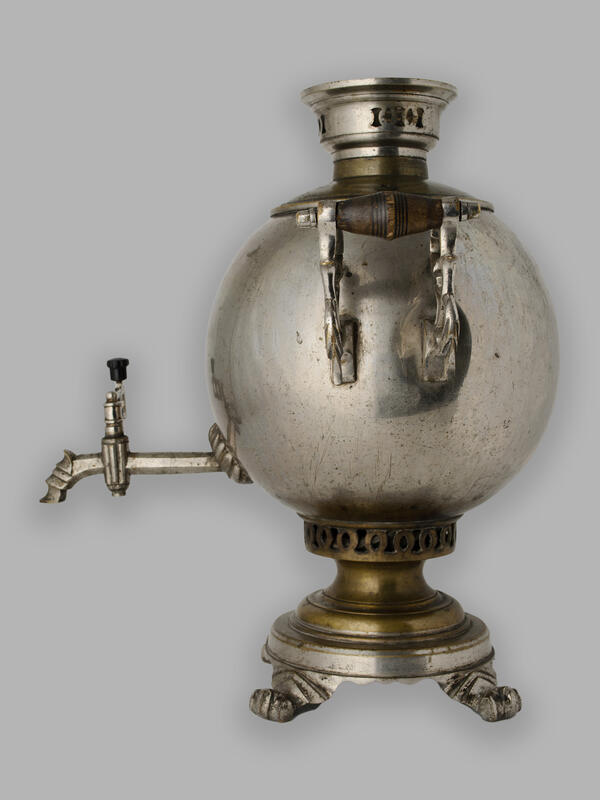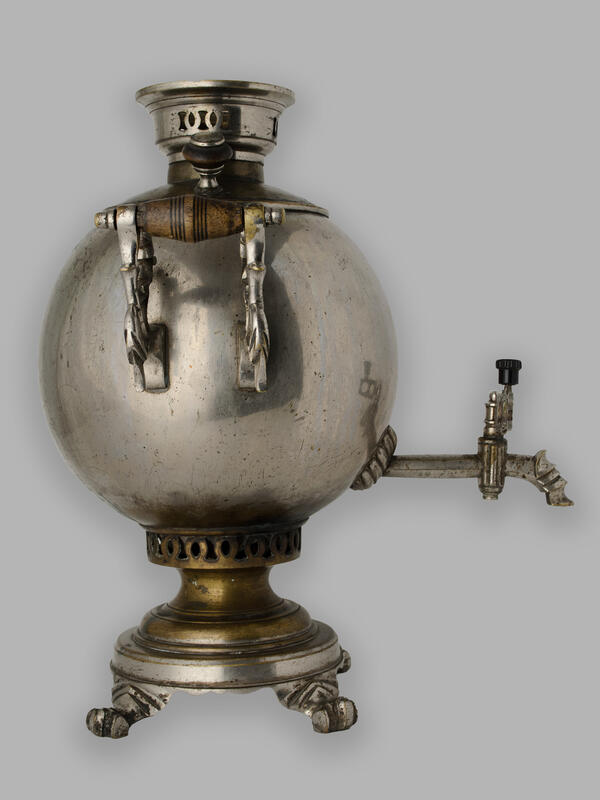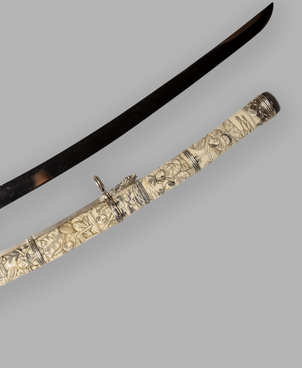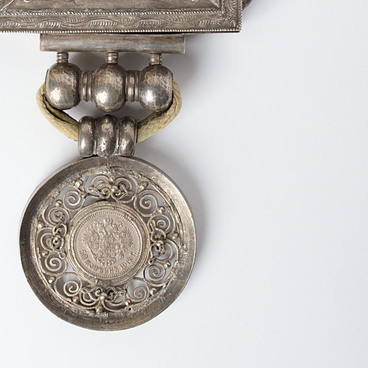This charcoal-burning samovar of the “Reinhold Teile Steam-Powered Factory in Tula” was manufactured in the late 19th century, shaped like a ball with Byzantine handles. In Russia, such water-heating devices were mainly produced by well-known Tula craftsmen.
Born in Prussia, the young locksmith Heinrich Erdmann Reinhold Teile came to Tula in the mid-1840s and started making buttons and other small products. In 1870, he set up a small samovar factory on Demidovskaya Street.
In 1874, Teile installed a steam engine. Five years later, the factory already used two steam engines of 24 and 36 hp. At that time, the factory mainly specialized in producing samovar accessories such as lids. However, in 1879, Heinrich Erdmann Reinhold Teile decided to produce ready-made samovars. He submitted a petition to the Department of Trade and Manufactures for approval of the brand stamp.
The factory was profitable. In 1883, it employed 50 people and produced goods worth 75,000 rubles, including various types of samovars, window and door hinges, stove doors, locks, waffle molds, irons, weights, and cast items made of copper and iron.
The factory suffered a fire and was unable to restore its production output. According to the 1889 account book, there was only one steam engine of 6 hp at the factory, the annual production output was 200 dozen samovars, and the value of production was 15,000 rubles. According to the same document, the factory belonged to the founder’s wife Bertha Gustavovna, while their son Rudolf Reinhold August Adolf Teile acted as manager.
A second fire aggravated the situation. In 1891, the factory was sold to Alexander Batashev. Heinrich Erdmann Reinhold Teile joined him as a co-manager for 3 years, but in 1892, he terminated the contract with Batashev. In 1894, Teile established a new samovar factory on Novo-Pavshinskaya Street.
In 1902–1903, the Teile brothers (all except Rudolf) and Bertha Gustavovna became citizens of Russia. After the death of their father, the three older brothers co-headed the family enterprise “Trading House of Bertha Gustavovna Teile and Sons”.
The Teile factory’s
samovars were distinguished by having a kerosene burner. Such fuel allowed
boiling water almost instantly, and kerosene samovars quickly gained
popularity. They were mostly popular among wealthy people, as kerosene was
expensive and not everyone could afford it.




